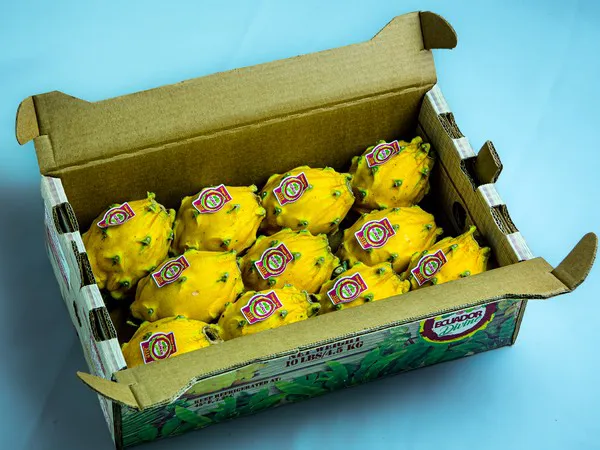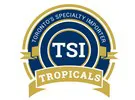As the calendar turns to the start of February, so begins the month of higher volume of yellow dragon fruit out of Ecuador. Brian Boccia of TSI Tropicals in Etobicoke, Ontario says peak production lasts until the end of March and this is anticipated to be the largest volume of fruit out of the country to date. “After March, supplies lighten up and there’s periodic supply coming in throughout the other months,” he says.

For TSI Tropicals, it is part of a continuously growing volume of yellow dragon fruit it’s been shipping. “We’ve been doing it for 20 years and we first started with yellow dragon fruit out of Colombia. It’s a very different fruit out of there and it wasn’t as popular as the Ecuadorian fruit is,” Boccia says. “The skin is very thick from Colombia. The thin-skinned fruit from Ecuador means you’re getting more meat ratio per fruit. So every year we’ve been bringing more and more. In the beginning with brought about 1,000 lbs. per week. Now we’re at over 30,000 lbs. per week.”
The popularity of yellow dragon fruit
While Ecuador’s continued investment in growing its yellow dragon fruit production helps, on the demand side, Boccia believes it’s the health benefits and the sweet taste of the fruit (which is sweeter than its sister fruit, white dragon fruit) that’s driving consumption. “The Asian community especially knows about the health benefits of it and anything yellow or golden color is also popular within that community,” he says.
 The only challenge is managing to get the right maturity and the cleanliness of the fruit, something Ecuador is working on. “Usually the fruit comes up with a bit of speckle on it. That’s the only challenge with the fruit though because the taste is outstanding and the sizing is pretty good,” he says, noting it’s generally medium-sized fruit.
The only challenge is managing to get the right maturity and the cleanliness of the fruit, something Ecuador is working on. “Usually the fruit comes up with a bit of speckle on it. That’s the only challenge with the fruit though because the taste is outstanding and the sizing is pretty good,” he says, noting it’s generally medium-sized fruit.
As for pricing, given the volume that needs to be moved, pricing will be aggressive. “The suppliers know what we’ve done in previous years and they’re continuing to look to us to move that volume. Pricing is very competitive,” says Boccia. That competitive pricing also helps drive demand. While the fruit normally retails at roughly $4.99-$5.99 CAD/lb., during this peak production period it often drops to $3.99 CAD/lb. “The marketing advantage is during this time when it’s cheaper, it allows new consumers to try it at a lower price.”
 For more information:
For more information:
Brian Boccia
TSI Tropicals
Tel: +1 (416) 251-8000
[email protected]
https://tsitropicals.com/










